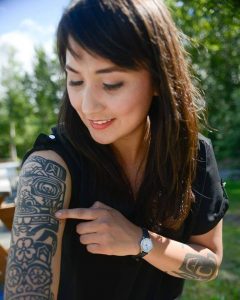I could have taken more time to do an icebreaker activity. I also could have taken more time to share more examples of each definition. I think I also want to play music during the workshop activities. Another great idea is to the do workshop activities with the group and to share maybe as a larger group because it was hard for the audience to share among one another or maybe I needed to give cleared instructions. I think I also could have done better at explaining my project. I also need to explain what the Fulbright program is and maybe provide information for how students could sign up for the program themselves?
I think I was a little nervous the day of the workshop, but earlier in the week I got extremely anxious and mildly depressed that it wasn’t good enough. I was so nervous that I did not come in the day prior to the workshop to prep. I really needed that day to prep and print things out and perhaps do a dry run. I did a weak dry run with my partner Cody, but I needed to have at least one hour to practice it out. The workshop ended up only taking 40 minutes. There was 6 students and one student who had come in later but did not fill out the pre-survey out or consent form.
I did the same workshop but I made adjustments. I was not nervous this time, because I had done it previously. I also changed the format by sitting with the group around one table. I moved the tv screen closer, so that I click through my slides. When I provided the definitions I took time to ask students what they thought and just had a conversation about identity, ethnic identity, culture, and cultural identity.
Another difference was that I provided a larger piece of paper, so students could doodle their thoughts during the workshop. At first students didn’t really use it but as the workshop progressed it was used during the workshop activity. The only difference I would consider in the future is how a workshop activity that seems “innocent” can really stir up past traumas or grief.
I went to go talk with the Aboriginal counselor on the Thompson Rivers University campus to get advice. She has mentioned that the river of life activity is not a light activity for people who have a history of trauma or deaths in their family, so it is more of a therapeutic activity done with a counselor during a session. I felt awful about this and sort of teared up, because it was not my intention to cause anyone harm. I did provide counseling information at the end of the workshop, but I know I need to consult with the Aboriginal counselor before I plan workshop three.
During the discussion I had with the Aboriginal counselor I realized that I didn’t necessarily need to have a workshop activity. The dialogue can be the workshop activity and students can reflect on the dialogue in their ePortfolio. Just like I am right now. I was trying to create this elaborate program, because I felt pressure from the academic world to make it complex. Except, identity as least for Indigenous peoples is already complex and I don’t need to create an ePortfolio that is complex too.
After feeling a little bummed out and relieved at the same time I realized I needed to do what I wanted to do this whole time; have a dialogue about these topics. I needed to be alright with not meeting western academic standards and do what the community needs and what they are asking for. I don’t need to come in with my “great ideas”, because it’s not effective. Now, that I have been brought back to reality I am going to ask students what they want from the ePortfolio.

